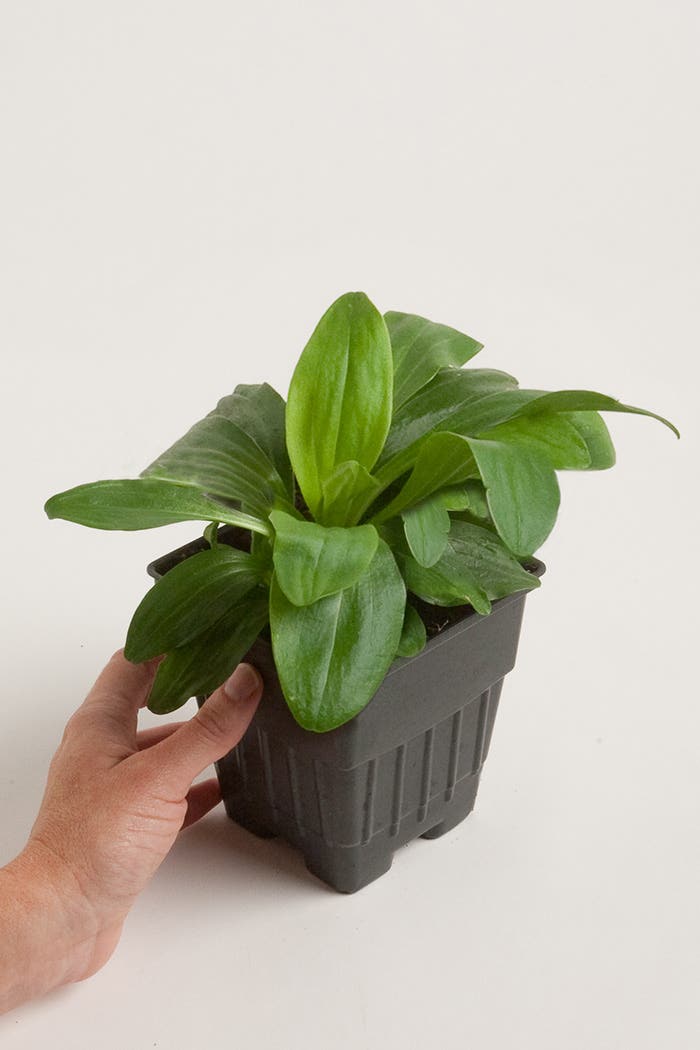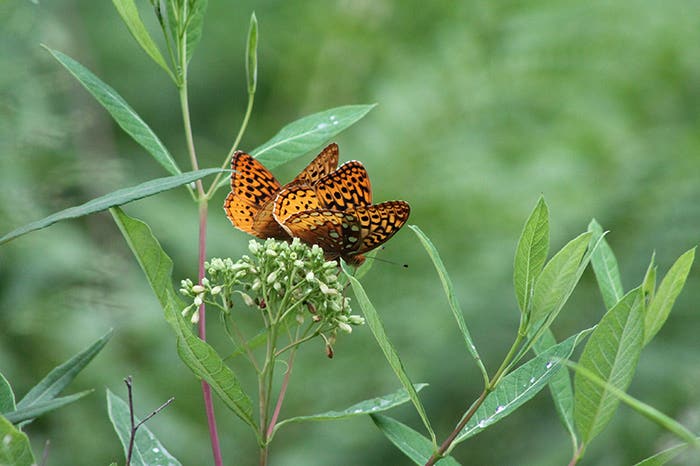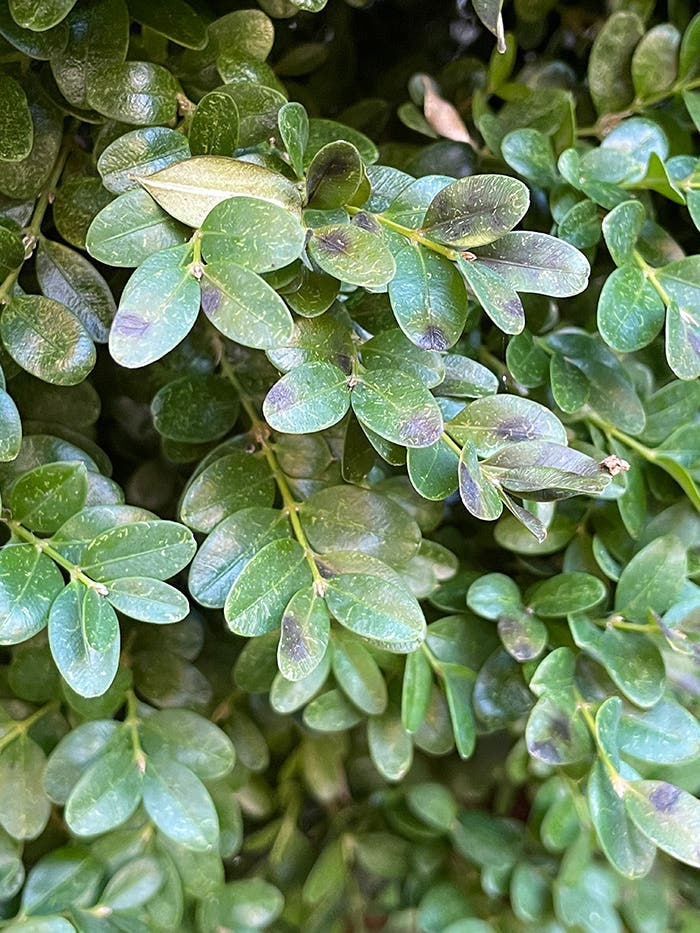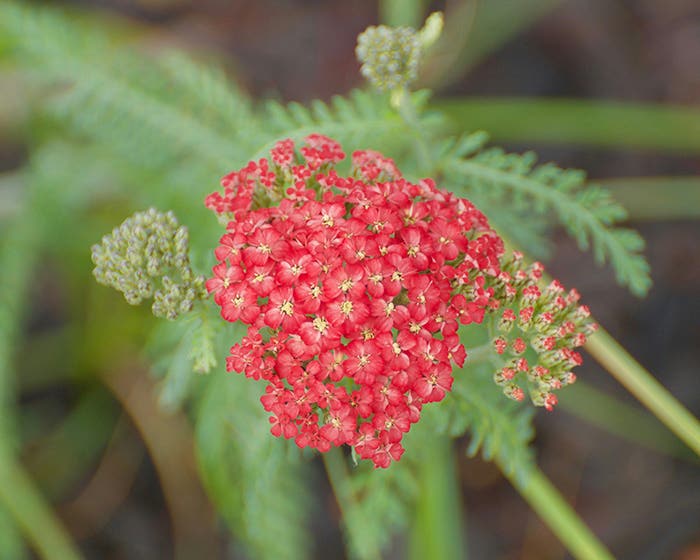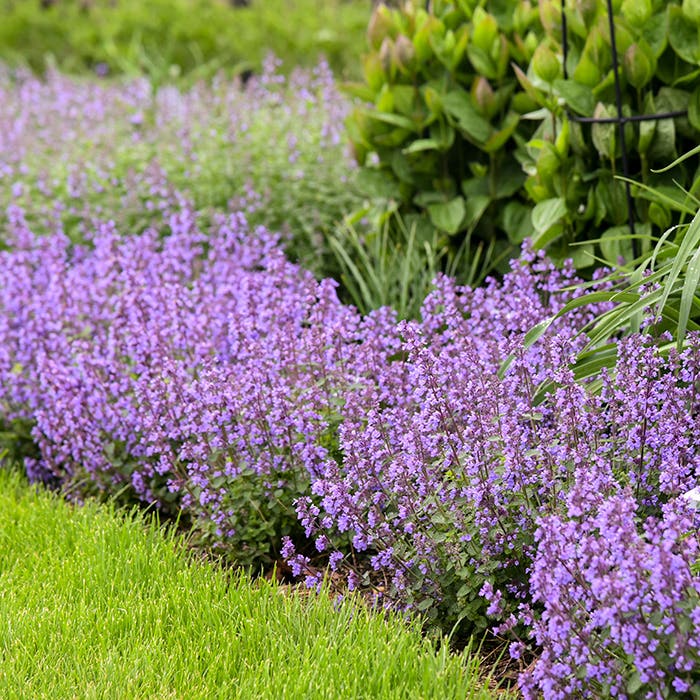Looking for your next gardening book to read? Here's a bunch of fantastic choices that cover a wide range of interests. (Note: As an Amazon affiliate, we earn from qualifying purchases made through affiliate links.)
A Garden’s Purpose by Félix de Rosen (Princeton Architectural Press, 2023)
Félix de Rosen, a landscape designer and artist, offers a uniquely joyous examination of gardens and their potential in his debut book.
He asks readers to be openminded in how they view, create and use gardens, and he demonstrates that same inclusivity in the text. That is, rather than focusing on a style, a climate or even a culture, he explores things that gardens, gardeners and gardening of all places and kinds share in common. We visit varied landscapes around the world—from the professionally designed to the homespun to the wild—to see different ways that details like boundaries, pathways and plants are used. These examinations push us toward making freer choices for such features in our own gardens.
The book is very thought provoking, but de Rosen also shares plenty of practical information for hands-on gardeners. For example, his passage on garden paving discusses various materials and their pros and cons. He provides advice on working with microclimates and building ecosystems, while he also showcases gardens full of found art. All of this is presented with a conversational and warm tone that makes A Garden’s Purpose a delight to read.
Prairie Up by Benjamin Vogt (3 Fields Books, 2023)
Benjamin Vogt’s second garden book comes in at a slim 160 pages, but it serves as a complete toolkit for the gardener looking to create a prairie-inspired home landscape.
Vogt begins with a chapter describing grassland ecology; he details how the plants, soils, insects and animals interact with each other, and he delves into how human activity disrupts these relationships. But he offers a hopeful take, pointing out ways that restored grasslands and prairie-like gardens may help mitigate the effects of climate change. These spaces can sequester carbon, prevent runoff and clean soil and water of contaminants, while letting passersby experience nature’s beauty, too.
From this background of “why,” Vogt dives into the prairie-garden “how,” beginning with building a planting list. He offers excellent advice for managing this first task (the hardest), providing clear steps to follow to find locally native species and then parse these options by their functions in the garden-to-be. Readers then learn several approaches to laying out the garden—including strategies to avoid an aura of weediness—plus how to plant it and monitor its development. Altogether, Vogt provides a clear route toward a more natural-looking and -functioning garden, like the many depicted in the book’s inspiring photographs.
Grasses for Gardens and Landscapes by Neil Lucas (Timber Press, 2023)
Author Neil Lucas followed his childhood dream to become a professional gardener; today he serves as Director of Knoll Gardens, a nursery and display garden in England. Over the course of his career, he found himself drawn less to woody plants and more to grasses. He saw that grasses could offer the same length of interest as trees and shrubs while being more versatile in design.
The first parts of Lucas’s Grasses for Gardens and Landscapes demonstrates exactly this point, making the book an excellent design guide. From both text and photographs, readers learn to appreciate all the different attributes of grasses and, in turn, how to apply them to best effect in different garden situations. Lucas shows how using more grasses can improve an overall design, and he provides lists and commentary to assist the reader in making good choices based on conditions—even dry shade—and specific usage, from hedges to containers.
For even more options, the reader can turn to the back portion of the book, which is essentially an encyclopedia of ornamental grass species and cultivars. Each entry includes Lucas’s notes to help gardeners choose grasses that suit their needs.
Brilliant English Gardens by Clive Nichols (Clearview Books, 2022)
In Brilliant English Gardens, renowned garden photographer Clive Nichols offers a visit to more than two dozen gardens in England. This book allows the reader full immersion into each place through its generous imagery.
Nichols provides a brief textual introduction to each garden, describing its location and background information, such as history and size, and pointing out a few significant features or key plants that are then revealed in the images that follow the text.
But this is overall a visual book, with most of the pages devoted to photographs alone. What’s more, the photos do not share space, but instead stand as a full page or spread across facing pages. This allows the reader to really explore the gardens, examining the details illuminated by Nichols’s skill. Because there are no captions, the reader is free to pick up on what they will—making this a book to return to time and again, to spot colors and textures perhaps not noticed prior.
The gardens Nichols portrays are varied in style, and all four seasons are represented by several different sites, so the book provides a wealth of different scenes to study. Brilliant English Gardens offers the simple joy of browsing gorgeous garden photos—and the opportunity to hone one’s own garden-design sense by “reading” those images.
Nature’s Best Hope Young Readers’ Edition by Douglas Tallamy (Timber Press, 2023)
First published in 2020, Douglas Tallamy’s Nature’s Best Hope put forth his idea of the Homegrown National Park, which would see privately owned lands being planted and tended to support wildlife. Now this popular book has been adapted for middle-grade children (ages 8 to 12 or so).
Crafted by Sarah L. Thomson, the Young Readers’ Edition presents the same material as the original text. The text is straightforward, compelling and easy to understand. Anecdotes make the concepts relatable, and headings divide the chapters into digestible chunks—always a good format for young readers.
This edition shares the same goal as the first, to drive participation in the Homegrown National Park. However, it’s also very effective at simply getting its intended audience more interested in the natural world outside their windows. With this book, kids will gain an understanding and appreciation of just how birds, insects and plants live their lives. From there, they’ll likely be compelled to help these wild neighbors thrive.
The book provides concrete steps that the children, their families and community members can take to do just that. Both big and small efforts are suggested and celebrated. The young readers’ Nature’s Best Hope suits its target audience, and it promises a bright future.
Tiny + Wild by Graham Laird Gardner (Cool Springs Press, 2023)
If you’re drawn to the naturalistic meadow-garden look or curious about ecological garden design and practice, but you’re not sure how or even whether to follow that path, check out Tiny + Wild.
In it, landscape designer Graham Laird Gardner shows the benefits of treating the garden as a cohesive community rather than a collection of individual plants. He explains how to design a community that will thrive in the conditions your garden provides. But crucially, he recommends starting small (hence the title), even using a large container or a raised bed, and sticking to a simplified palette. This approach, he explains, allows the gardener to experiment, gain experience and then be better equipped to design, plant and maintain larger spaces.
The steps to creating a meadow-esque garden in a tiny area are the same as those in a big plot, Gardner shows, and he provides clear advice for the entire journey. Especially helpful are his advice on exploring locally for inspiration and tailored expert advice, as well as the many questions he encourages readers to ask and answer of themselves, to keep the project realistic and successful. Technical advice and plant lists round out the book, making it the perfect primer for those just starting to dabble in natural planting design.
The Vegetable Garden Problem Solver Handbook by Susan Mulvihill (Cool Springs Press, 2023)
When expert grower Susan Mulvihill noticed that the home-vegetable-growing realm lacked an easy-to-use, accurate and comprehensive resource for answering common questions, she decided to create one. Her resulting book, The Vegetable Garden Problem Solver Handbook, lives up to its name and deserves a spot on the bookshelf of home growers everywhere.
Mulvihill, who follows and recommends only organic practices, starts with a chapter on proper plant and garden care, a smart inclusion that goes a long way toward stopping problems before they start. Of course, it’s impossible to altogether avoid trouble in the veggie patch, so subsequent chapters cover all sorts of common plant damage and diseases, insect pests and thieving wildlife. Mulvihill helps the reader diagnose the issue and choose a course of action.
The information she gives is excellent, and it’s wonderfully bolstered by the book’s design. Chapters have a corresponding color on their pages’ top margins, making it easy to flip right to a certain section. There’s also a fantastic list of common crops and the problems they’re most likely to develop. All of this makes the book supremely efficient—a quality much admired by vegetable gardeners.
Growing Bulbs in the Natural Garden by Jacqueline van der Kloet (Timber Press, 2024)
As she started her career in landscape design, Jacqueline van der Kloet studied gardens known for bulbs and experimented with bulbs at her home garden, so that she could use them to their full potential in her work. Eventually, she became known for her knowledge of this unique plant category. Fellow designers have sought her input on projects around the world, including Chicago’s Lurie Garden.
With the writing of Growing Bulbs in the Natural Garden, van der Kloet’s expertise is now accessible to gardeners everywhere. The idea for the book came when she worked with local volunteers planting bulbs per her design for 2022’s Floriade, a months-long garden expo held in the Netherlands, her home country. Even though they were experienced and passionate gardeners, the volunteers had many questions about the bulbs. Growing Bulbs in the Natural Garden fills in the knowledge gaps that her conversations with the volunteers exposed.
Van der Kloet notes that her “ideal garden is a nonchalant garden in which elegant plants amalgamate with bulbs added later” (as opposed to a seasonal display of bulbs laid out in formal blocks, something like Victorian bedding annuals). This describes the “natural garden” of the book’s title. Her preference informs the advice she offers and makes the book perfect for gardeners with an existing, maturing space.
The book includes plenty of information on specific bulbs and their care and planting, including the best tools for such. Van der Kloet offers lists of suggested spring, summer and fall bulbs for beginners and “enthusiasts” and sorts various types by special purposes, such as supporting pollinators, meeting tough conditions and filling seasonal containers. This is all in addition to a section on her own favorite species and cultivars. It’s a bulb-packed book.
However, this is very much a design book, too. The author offers a helpful discussion of color, including what sunlight and season shows each color best. She provides example designs that begin with perennials and shrubs chosen for color(s), and then she explains how to sprinkle in bulbs for seasonal embellishment. Retrospectives on several of her renown bulb-design projects round the design portion out.
North American readers should note that van der Kloet writes as a gardener in the Netherlands; she refers to specific months when discussing tasks or bloom time, and the calculations are in metric system. Readers will just need to bear in mind their own climate and convert measurements if desired. Also, the book includes plants that grow from true bulbs, like tulips, but rest assured it also covers corms, tubers and rhizomes, such as crocus, dahlias and canna, respectively. Simply for smooth reading, she refers to them all as “bulbs” outside of the entries on specific geophytes, as the category can be called.
The Garden Journal by Linda Vater (Cool Springs Press, 2023)
Here’s a very handy book that might just become the gardener’s favorite. Yes, it’s a journal in which to record tasks and happenings (five years’ worth, in fact!), but it offers so much more than blank space. The Garden Journal is really about prompting you to become a better gardener and improve your garden’s design in every season.
The first part of the book provides space to describe, in words or sketches, the basics of your garden, including soil type, layout, dimensions and key plants. There are places to list other key items, like the contact info of trusted contractors and what tools are in the shed, and a page with conversions between metric and imperial (US customary) system. Suggested tasks, organized by season, face blank pages for making your own list of timely chores. Having all of this info in one spot is invaluable for the busy gardener.
The second part of the book breaks the year into seasons. Author Linda Vater begins each season with an idea of how to make your garden better now. For instance, in spring there’s discussion of adding self-sowing plants, while in summer she writes on flowers for cutting. She also provides reminders on typical tasks like how to calculate a mulch order or how to clean containers out in fall. Sweet line drawings add whimsy to every page.
Following each season’s introduction, there’s the space to write daily records. Each date has space for notes over five years, with a line to write the year and the weather, plus blank lines for observations, be it something blooming, a task completed, wildlife spotted and so on.
The wonderful thing about The Garden Journal is that when you begin it, you can rely on Vater’s writings for nudges and reminders, but over time your own notes will spur your growth as a gardener. Vater herself learned to tend plants and design gardens by working on the space around her Oklahoma home. Eventually her garden came to be featured in magazines and on tours, and she became a trusted resource in garden writing, television and social media. Vater has shown just how far a self-taught gardener can excel; with The Garden Journal, she helps others down the path of learning by doing.
The Ultimate Wildlife Habitat Garden by Stacy Tornio (Timber Press, 2024)
In The Ultimate Wildlife Habitat Garden, Stacy Tornio, a former editor for Birds & Blooms magazine, aims to help the reader become more intentional about attracting birds, bees and other wildlife to the garden. The book strikes a good balance between facts and practice, providing useful profiles of the “what”—animals, insects and plants—along with the “how”—garden and design techniques that support them.
Tornio devotes various chapters to specific categories of wildlife. Each chapter starts with practical details, such as how to create an attractive habitat for this category. She then provides brief profiles of widespread or common species—making the book applicable across the United States. There’s a photo to go with each, plus key details listed, such as habitat and diet.
Each chapter ends with pages of recommended plants, complete with growing information. Each plant includes a note on what wildlife it attracts in addition to the chapter’s target, as Tornio explains that many plant species are helpful across different populations.
The plants profiled in each chapter range from flowering annuals through perennials to deciduous and evergreen shrubs and trees. This means the reader can build a beautiful garden for all seasons while simultaneously striving to support wildlife. Tornio includes a mixture of native and non-native plant species.
Further to the design aspect of the book, there are 10 illustrated example gardens showing how a combination of plants might be arranged. There are expected ideas like a butterfly garden, but also combos that focus on a site’s challenges, like shade or dry soil. These dual-purpose gardens are a nice addition that shows how one can, shall we say, support two birds with one stone.
What Makes a Garden by Jinny Blom (Frances Lincoln, 2023)
In What Makes a Garden, her second book, acclaimed UK-based garden designer Jinny Blom takes readers on a fascinating exploration of all the elements that combine to create a garden. Her unique mix of musings and practical advice are sure to get any garden lover’s wheels turning.
Blom notes that she’s sharing her perspective at a time when gardens are trending toward the natural and eco-purposeful, and away from formality and sheer ornament. She makes the point that gardens are not the wilderness, though. Whatever their style or aim, gardens are developed by people, who draw from a gamut of experiences and emotions that influence their choices. She observes that “gardens are all about life”—which includes plants, animals and insects, yes; but humans, too. The book celebrates how humans and gardens give each other life.
In a big-picture take, Blom explores how gardens express culture and how they fulfill our physical and psychological needs. She includes a deep dive into each of our five senses and how we can relate to gardens through each, and she draws some parallels between artmaking and garden design, though she highlights that gardens change over time.
Next she pivots to examine the finer, concrete details that go into a garden, like fences, gates and paths. She discusses reasons for using different styles and materials. Continuing along this thread she then shows four gardens that she designed leading up to writing the book. For each garden, there are generous photos of specific plants and broader spaces, plus Blom’s own sketches, lists or planting designs. Her discussion covers the choices that she made and why.
Taken all together, the engagingly written What Makes a Garden pushes the reader to consider each detail of a designed space and how these parts combine to tell both the garden’s story and the story of the people who love it. While not a “how-to” book, it offers much insight into the design process and will surely help readers refine their gardens through sensitive choices.
Nature, Design, and Health by David Kamp (Library of American Landscape History, 2023)
In Nature, Design, and Health, David Kamp looks back on his 40-year career as a landscape architect, educator and advocate. He is the principal of the design firm Dirtworks, which he named for his guiding belief that when life feels like a struggle, or even downright chaotic, “dirt works” to fix our outlook. Explaining the name, he writes “nature can provide balance in our lives.”
Although Kamp always believed in nature as a source of healing, a personal crisis about eight years into his career helped him see the role design might play. A close friend and Kamp’s mother were both coping with serious illness; meanwhile, he tested positive for HIV and began treatment. As he coped with his emotions and observed different health-care settings, including his mother’s home-based care, he realized how much landscape design can improve the lives of patients, their families and care workers.
Health problems present physical, emotional and mental challenges. Kamp’s first opportunity to design with these challenges in mind came soon, when he volunteered to plan a garden for people with HIV/AIDS on the campus of a medical facility in New York City. In the book, he looks in depth at this project and then at a series of other projects, including medical settings as well as public spaces, schools and private homes.
In sharing the story of each project, Kamp explains precise issues that came up and how he opted to resolve them—for example, how to balance patients’ desire for privacy in enjoying an outdoor space with the staff’s need to keep an eye on them; or how walls often feel threatening to people with dementia, so Kamp had to find a way to make an assisted-living facility’s garden feel secure and defined while keeping its edges subtle. He details how he often collaborated with other designers, architects, contractors, clients and even patients to find solutions.
The book is illustrated with Kamp’s own sketches and plans as well as photographs from each completed project. The photos often include people using the space, which is a lovely detail that drives home the theme. Nature, Design, and Health is a wholly worthwhile celebration of both Kamp’s work and the work that gardens can do.
Related: More gardening books we recommend.


